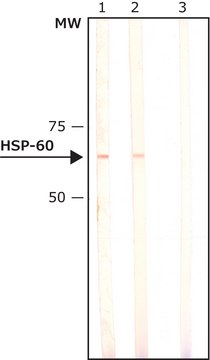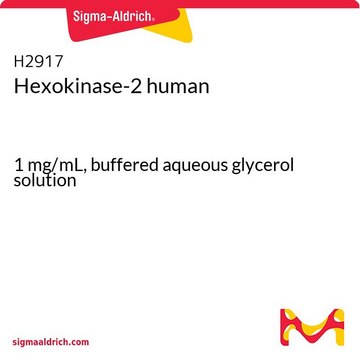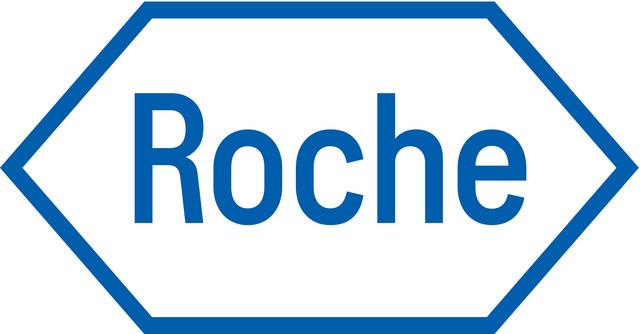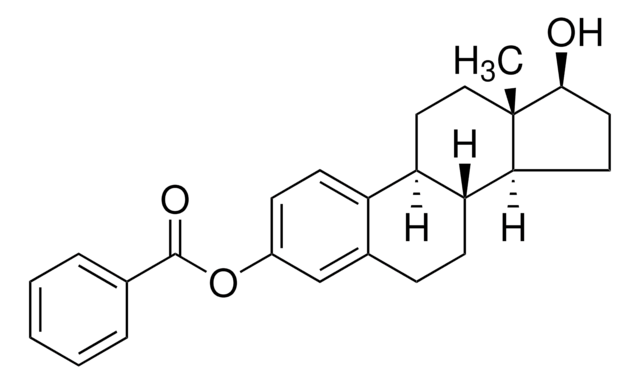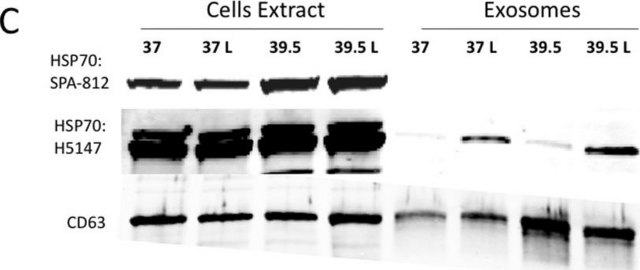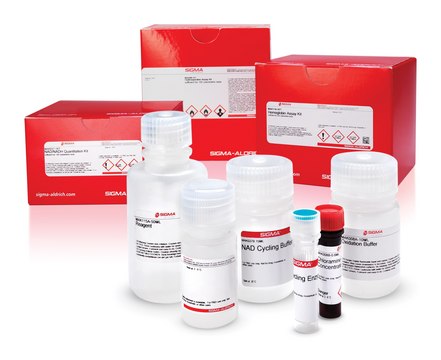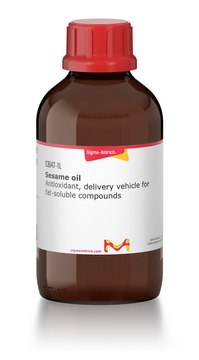H8289
Anti-dimethyl-Histone H1.4 (diMe-Lys26) antibody produced in rabbit
~1.5 mg/mL, affinity isolated antibody, buffered aqueous solution
Synonym(s):
Anti-H1.4K26me2, Anti-H1K26me2
Sign Into View Organizational & Contract Pricing
Select a Size
All Photos(1)
Select a Size
Change View
About This Item
UNSPSC Code:
12352203
NACRES:
NA.41
Recommended Products
biological source
rabbit
Quality Level
conjugate
unconjugated
antibody form
affinity isolated antibody
antibody product type
primary antibodies
clone
polyclonal
form
buffered aqueous solution
mol wt
antigen ~35 kDa
species reactivity
human
concentration
~1.5 mg/mL
Specificity
ChIP validated
Immunogen
dimethylated synthetic peptide corresponding to amino acids 22-23 (diMeLys26) of human histone H1.4.
Application
Anti-dimethyl-Histone H1.4 (diMe-Lys26) antibody produced in rabbit is suitable for western blotting at a concentration of 0.5-1μg/mL using acid-extracted fraction of HL60 cells.
Biochem/physiol Actions
The building block of chromatin is the nucleosome which is comprised of an octamer of core histones (H2A, H2B, H3, and H4) around which 147 bp of DNA are wrapped. In mammalian cells, four histone H1 variants (H1.2 to H1.5) are present in all somatic cells, and a fifth (H1.1) is restricted to thymus, testis, and spleen and possibly lymphocytic and neuronal cells. Histone H1.4 is di-methylated or acetylated at Lys26. Lys26 is located within the flexible N-terminal domain of H1.4, just preceding the globular domain.
Physical form
Solution in 0.01 M phosphate buffered saline, pH 7.4, containing 15 mM sodium azide.
Disclaimer
Unless otherwise stated in our catalog or other company documentation accompanying the product(s), our products are intended for research use only and are not to be used for any other purpose, which includes but is not limited to, unauthorized commercial uses, in vitro diagnostic uses, ex vivo or in vivo therapeutic uses or any type of consumption or application to humans or animals.
Not finding the right product?
Try our Product Selector Tool.
related product
Product No.
Description
Pricing
Storage Class Code
10 - Combustible liquids
WGK
WGK 3
Flash Point(F)
Not applicable
Flash Point(C)
Not applicable
Personal Protective Equipment
dust mask type N95 (US), Eyeshields, Gloves
Regulatory Information
常规特殊物品
Choose from one of the most recent versions:
Certificates of Analysis (COA)
Lot/Batch Number
Don't see the Right Version?
If you require a particular version, you can look up a specific certificate by the Lot or Batch number.
Already Own This Product?
Find documentation for the products that you have recently purchased in the Document Library.
S Khochbin
Gene, 271(1), 1-12 (2001-06-19)
Genes encoding linker histone variants have evolved to link their expression to signals controlling the proliferative capacities of cells, i.e. cycling and growth-arrested cells express distinct and specific H1 subtypes. In metazoan, these variants show a tripartite structure, with considerably
J C Rice et al.
Current opinion in cell biology, 13(3), 263-273 (2001-05-10)
Post-translational addition of methyl groups to the amino-terminal tails of histone proteins was discovered more than three decades ago. Only now, however, is the biological significance of lysine and arginine methylation of histone tails being elucidated. Recent findings indicate that
Papita Mandal et al.
The FEBS journal, 281(23), 5292-5308 (2014-09-30)
Glutamate dehydrogenase has been recently identified as a tissue-specific histone H3-specific clipping enzyme. We have previously shown that it cleaves free as well as chromatin-bound histone H3. However, the physiological significance of this enzyme is still not clear. The present
Our team of scientists has experience in all areas of research including Life Science, Material Science, Chemical Synthesis, Chromatography, Analytical and many others.
Contact Technical Service